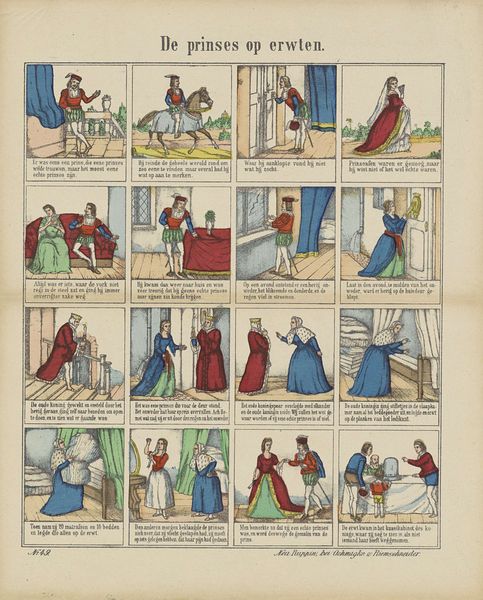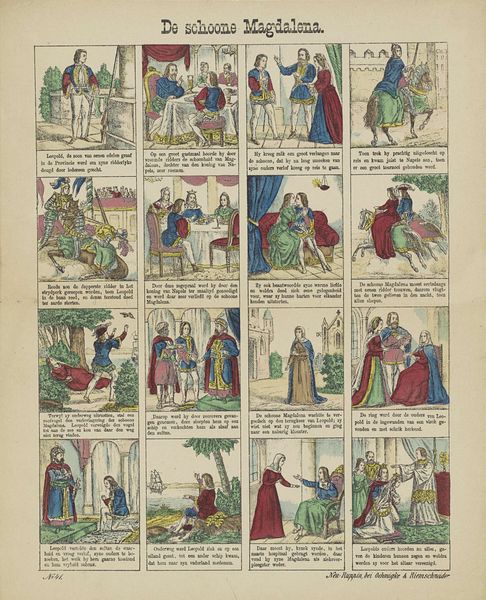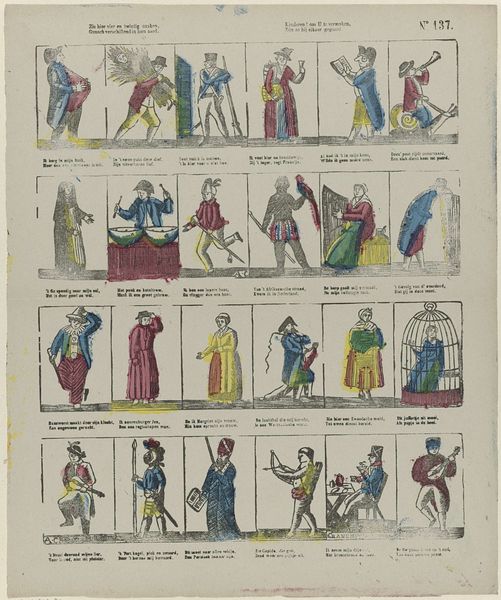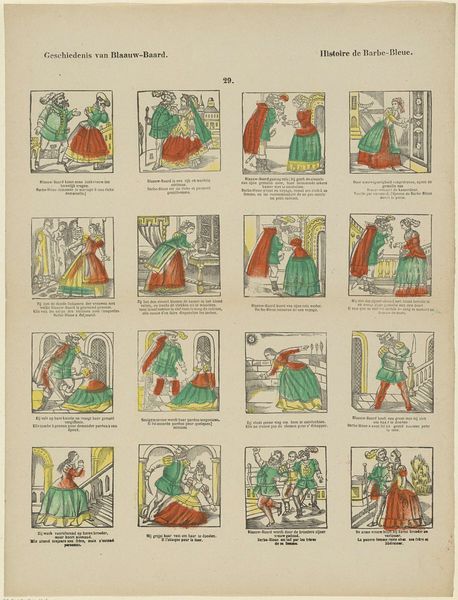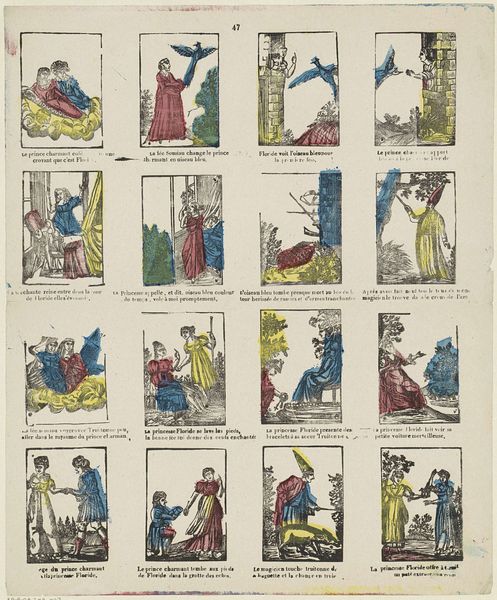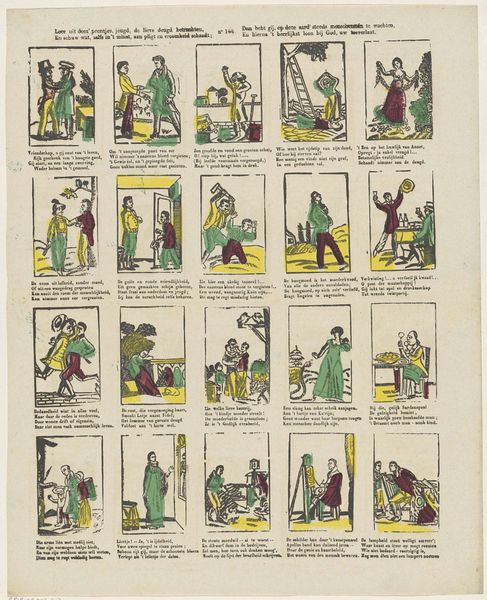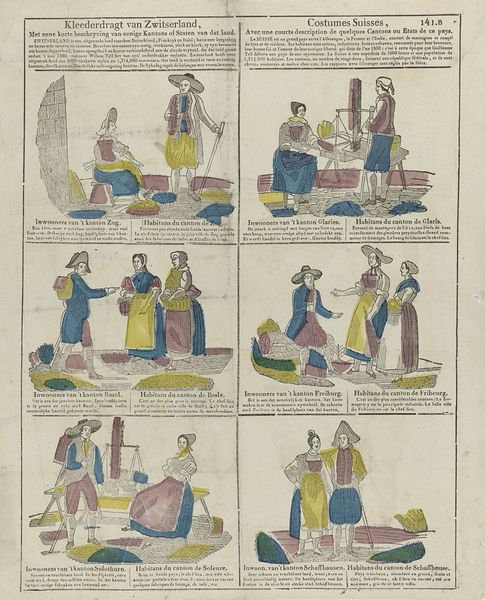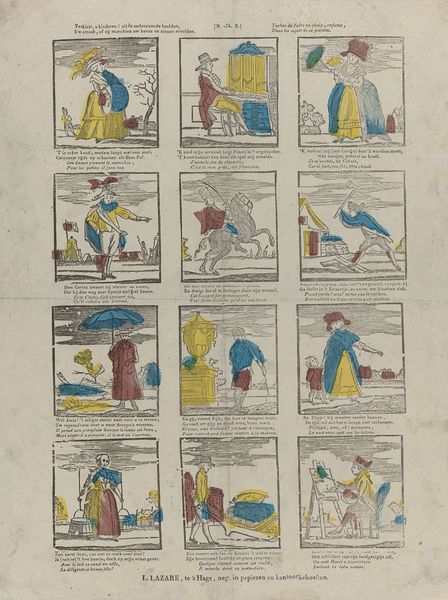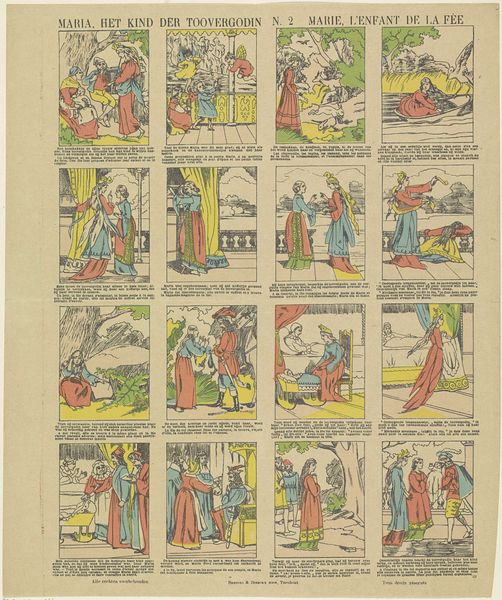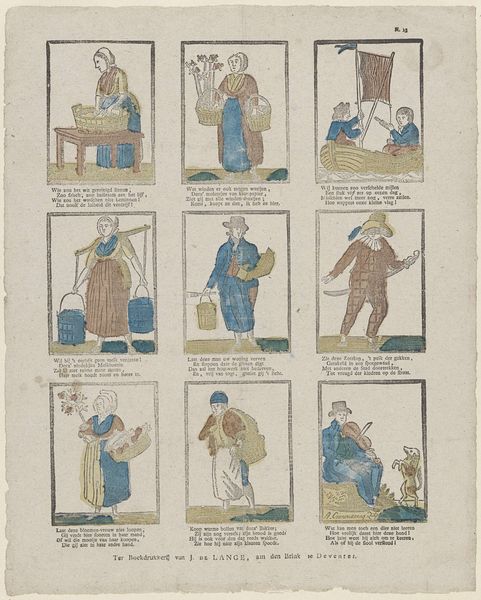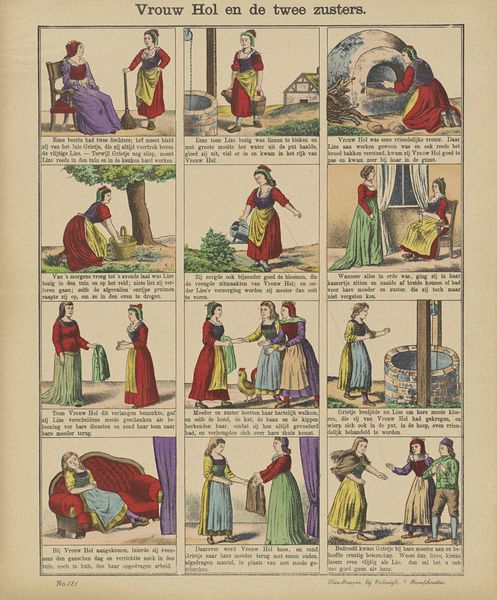
lithograph, print
#
fairy-painting
#
comic strip sketch
#
narrative-art
#
comic strip
#
lithograph
# print
#
cartoon sketch
#
comic
Dimensions: height 379 mm, width 312 mm
Copyright: Rijks Museum: Open Domain
Curator: Here we have "Histoire de Fées et de Peau d'Âne", a lithograph print dating from somewhere between 1827 and 1894, now held at the Rijksmuseum. It's a page of sequential images, almost like an early comic strip, illustrating a fairy tale. What strikes you first? Editor: There's a whimsical, somewhat chaotic feel to it. The colours are muted but charmingly applied, giving a sort of antique effect. I see romantic costumes and very basic backgrounds... very stage-like somehow. I wonder, did they think this could be sold to children? Curator: It's fascinating to consider the intended audience and the production of such an item in the 19th century. This would have been a relatively inexpensive print, making narrative art accessible to a broader audience. We should be paying close attention to the production here: look at the repeated poses and very limited color scheme and wonder how such commercial decisions affected the storytelling aspect of each fairytale. Editor: Absolutely, you know, looking at the materials -- the lithograph and the relatively basic rendering -- gives it that ephemeral quality, but also it is reminiscent of the itinerant performers of fairytales and oral traditions, the sort of "cheap seats" aesthetic almost... which adds its own charm now, I suppose. Curator: Precisely. By democratising distribution, such materials change people's connection to art and how culture itself is then seen as a commodity and not something unique to aristocrats or royals... Look at the repetition, then, how it turns this fairytale into something available and reproducible across wide regions and large demographics... it shifts meaning significantly from a royal entertainment to everyday commerce! Editor: And that almost guarantees these would become children's fairytales... passed down through generations... the image has something so raw about it that reminds me of the story of Scheherazade… What seems a basic comic-book approach to fairytales almost contains the same type of power that oral stories of centuries past held too. It's almost ironic, isn't it? Curator: Indeed, art has often found itself oscillating from rare crafts to something to reproduce across and between cultures... and such changes deeply reflect socio-economical and even geopolitical interests. These seemingly innocent comics were more powerful than kings! Editor: Quite profound for a simple comic, eh? Still gives you lots to dream about now too, it still feels very immediate.
Comments
No comments
Be the first to comment and join the conversation on the ultimate creative platform.
